VMworld 2012: Storage Takes Center Stage (Part 2)
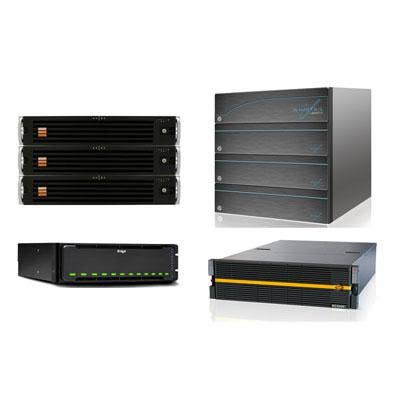
Storage has always been an important part of virtualized environments ever since the day VMware first introduced VMotion. However, as data centers have become more virtualized and tied to the cloud, storage has become a critical component.
The importance of storage to both virtualized environments and the cloud has never been more clear than at VMworld, where vendors large and small are introducing new flash storage arrays, data protection software, intelligent management, tiering to the cloud and more.
If you thought the storage offerings from last year's VMworld was big, you will be amazed at what's happening in 2012.
Just turn the page to get started.
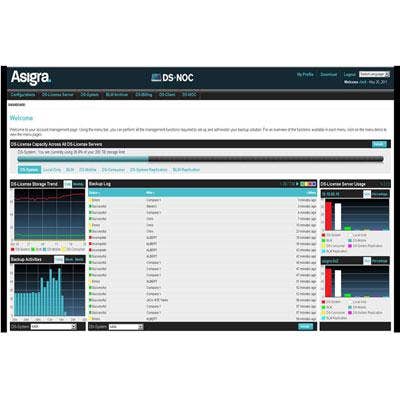
Toronto-based Asigra showcased cloud backup deployed as a virtual appliance and demonstrated its use to protect and recover mobile device data. Asigra Cloud Backup provides end-to-end device agnostic data protection across a wide range of platforms and physical, virtual and cloud computing infrastructures. Smartphone and tablet PC users can now use it to backup and recover their data anytime and anywhere with Asigra Cloud Backup, which the company said meets stringent compliance regulations. Asigra mobile device protection supports both Apple iOS-based and Google Android-based tablets and smart phones.
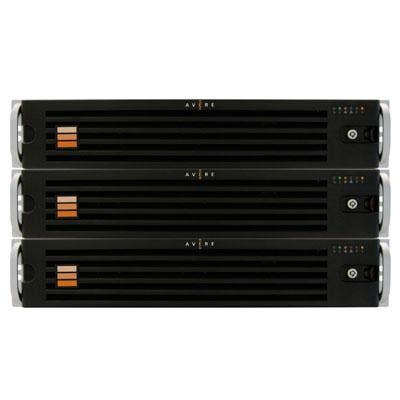
Pittsburgh-based Avere introduced new VM-aware flash pools, which include FlashRead to help eliminate VDI boot storms and FlashWrite to help accelerate virtual servers and handle write-heavy random IO workloads.
Avere FlashRead automatically places hot data blocks on flash in the company's FXT Series Edge Filers to accelerate read performance. Hot blocks automatically replicate on multiple nodes within an FXT Series cluster. FlashRead automatically stripes large files such as Oracle databases across multiple nodes within the cluster.
Avere FlashWrite accelerates write operations by terminating them on the NVRAM and flash media contained in FXT Series Edge Filers. FlashWrite offloads hard drive storage from write-heavy applications, such as VMware and Oracle, and mirrors write data to multiple nodes within an FXT Series cluster.
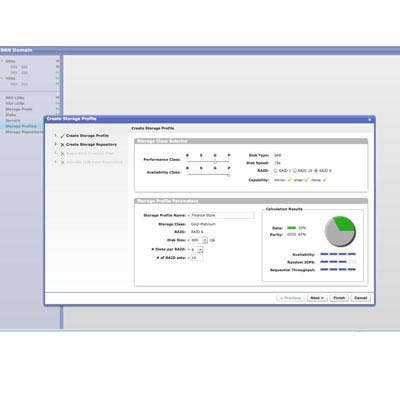
Coraid showed its new EtherCloud platform for simplifying the delivery of scale-out infrastructures to modern data centers. EtherCloud leverages a policy engine and REST APIs to connect data center infrastructures to applications for one-click enterprise storage provisioning. This provides one-click provisioning of enterprise storage configurations while simplifying capacity and performance management to decrease infrastructure-provisioning times.
The Redwood City, Calif.-based company also introduced EtherFlash Cache, a programmable SSD cache to accelerate read performance for server virtualization, web, database and email applications. Users can provision and re-assign application priorities in the cache. A real-time caching algorithm helps ensure that the most frequently read data is served from SSDs.
The solutions are slated to be available this fall.
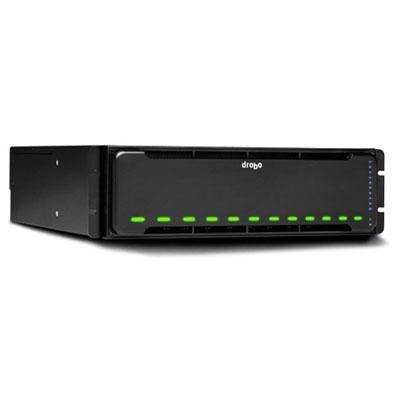
A new SSD tier in the Drobo B1200i storage system boosts IO performance up to 300 percent so customers can take advantage of hard drive capacities and SSD performance in a single storage system. San Jose, Calif.-based Drobo’s patent-pending automated data-tiering automatically utilizes SSDs alongside hard disk drives so that a small number of SSDs will accelerate all applications automatically in a breakthrough fashion. Drobo said the mix provides VMware virtual servers and their applications with the IO performance they need. The new B1200i SSD is suited for use as primary storage for up to 250 users, or as tier-two storage and backup for departments in larger organizations.
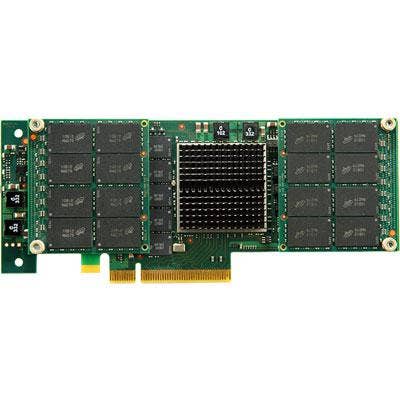
EMC in February introduced VFCache, a PCIe Flash-based storage solution that sits in servers and works with external arrays to increase storage performance across multiple tiers from the server to the cloud.
At VMworld, the Hopkinton, Mass.-based storage vendor added in-line cache deduplication functionality to VFCache to significantly increase the effective size of cache in environments with applications leveraging high duplication ratios, EMC said.
EMC also said that VFCache is the only PCIe Flash solution certified for interoperability with VMware VMotion, a certification that enables quick, easy deployments for continuous up-time, fluid operations and seamless migrations.
Also new is support for multiple PCIe cards per server and a new 700-GB capacity option.
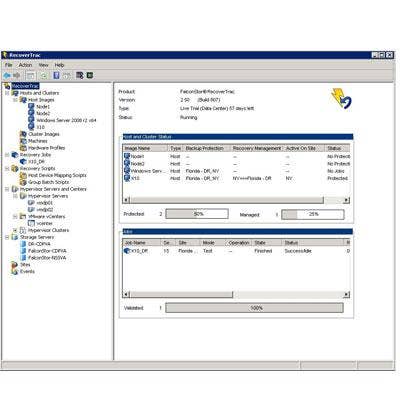
Melville, N.Y.-based FalconStor Software used VMworld to introduce its FalconStor RecoverTrac 2.5, an application that automates recovery of complete IT services in heterogeneous data center environments. A standard feature of FalconStor Continuous Data Protector (CDP) and FalconStor Network Storage Server (NSS) solutions, the FalconStor RecoverTrac disaster recovery automation tool lets companies protect critical business services and recover these services quickly.
The new version 2.5 increases performance by recovering multiple machines simultaneously, and it works with VMware and Microsoft's Hyper-V to allow failover and failback between any combination of physical and virtual servers and between dissimilar hardware. It also now supports VMware vSphere 5 and VMware cluster, and it includes a push-button disaster recovery test.
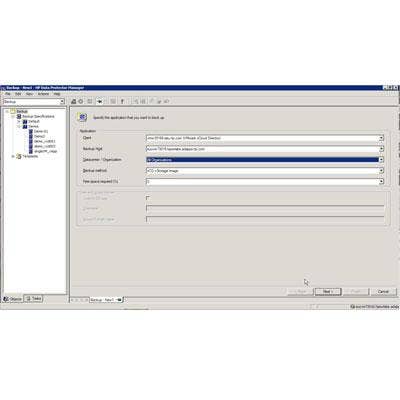
Autonomy, a Hewlett-Packard company, said its HP Data Protector 7 has been enhanced to provide integrated security for VMware’s cloud. It is the first and only enterprise backup and recovery application that delivers fully automated, policy-based protection for the VMware vCloud Director environment, the company said.
HP Data Protector 7 provides policy-based data protection for an array of configurations within a virtual data center. Business critical backup policies are automatically applied to new virtual machines within a virtual data center. It includes the ability to deduplicate data anywhere -- at the application source, backup server or target appliance -- and centrally manage the deduplicated data movement across the enterprise for disaster recovery.
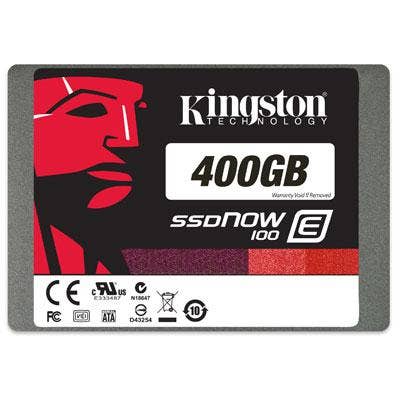
Kingston Technology’s new enterprise-class E100 SSD was designed for use in mission-critical environments such as data centers. The Fountain Valley, Calif.-based vendor said the E100 offers ten times the endurance of typical client SSDs, with 30,000 program/erase cycles on the E100 compared to about a 3,000 cycle on standard SSDs. The embedded SandForce DuraWrite SF-2500 enterprise class processor provides the high read/write performance and endurance,
The E100 also includes Tantalum capacitors so existing writes are committed and/or retired during a power loss to prevent any data loss. The capacitors can withstand higher temperatures than the super capacitors commonly used in SSDs, helping endure proper shutdowns during unexpected power interruptions, Kingston said.
The E100 is backed by a three-year warranty.
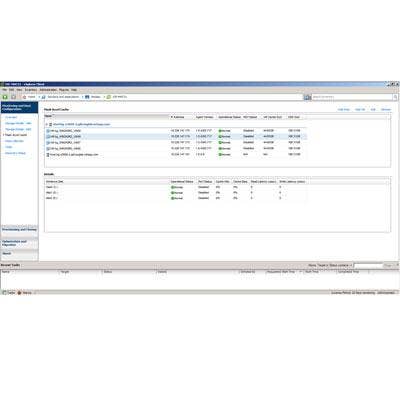
At VMworld, NetApp showed its new Flash Accel software for turning server-side Flash into a cache for increasing the performance of “hot,” frequently accessed data. NetApp estimated that storing up to 2 TB of hot data in server flash memory reduces application and server latency by up to 90 percent and increases IOPS by 80 percent. It also helps reduce demand on back-end FAS storage, the Sunnyvale, Calif.-based company said.
NetApp also expanded its Alliance Partner Program to embrace hardware and software server-caching partners looking to develop solutions with NetApp's Data Ontap storage operating system and its Flash Accel software. Flash Accel is slated to be available in December.
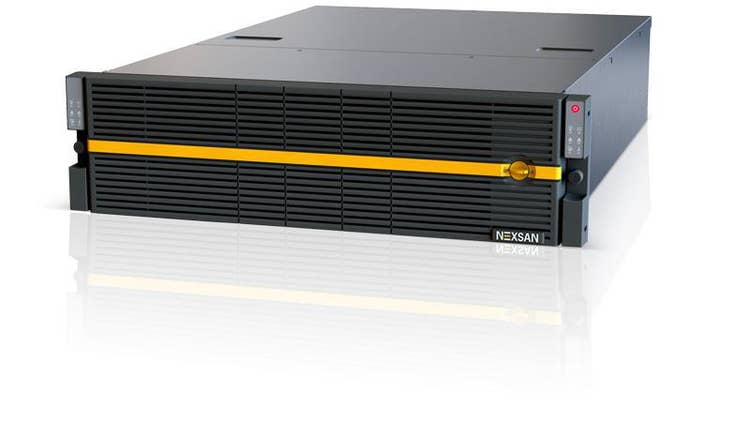
Nexsan, a Thousand Oaks, Calif.-based provider of unified hybrid data storage systems, is partnering with Cumulus Systems, a Mountain View, Calif.-based supplier of virtual and physical optimization solutions, to provide a free, seven-day assessment of enterprise customers’ VMware environment performance. The assessment helps businesses understand what configuration changes are needed to allow their virtual environments to run more efficiently. Deploying VMware creates significant challenges in sizing the servers and storage correctly according to application performance needs. Cumulus Systems’ MARS product measures detailed performance over a period of time for an entire virtual environment from the server through the storage. It then analyzes the data and recommends solutions. The free assessment is available through December 2012.
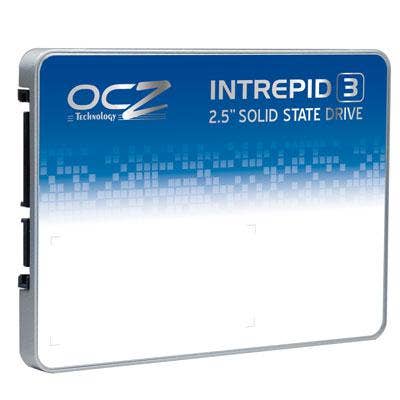
VMworld saw the introduction of OCZ Technology's new Intrepid 3 2.5" SATA III SSDs. The new SSDs include features to extend NAND flash life and enhance drive reliability. The Intrepid 3 supports sequential bandwidth of up to 550 MB per second and maximum random I/O performance of up to 120,000 input/output operations per second (IOPS). The Intrepid 3 SSD Everest 2 controller features Ndurance 2.0, a suite of endurance and reliability tools designed to extend NAND flash memory life while providing enterprise-class endurance, reliability and data integrity. The Intrepid 3 SSDs will be available in a range of capacities and offer optional power-fail protection, as well as several NAND memory options including MLC, eMLC and SLC.
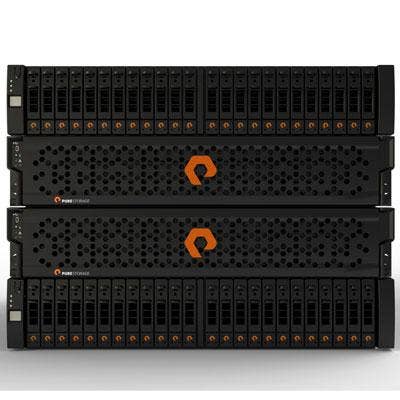
Mountain View, Calif.-based Pure Storage unveiled the next generation of its flagship Flash Array family of all-flash arrays at VMworld with a new feature set that includes iSCSI connectivity, ZeroSnap snapshots and complete management integration with VMware via a vCenter plug-in. The demo showed 1,000 virtual machines running in 8U of flash storage from a single server via both Fibre Channel and iSCSI connectivity.
Pure Storage in May first introduced its Flash Array family of scalable, all-flash enterprise arrays that the company says brings the price of all-flash storage down to between $5 and $10 per GB, or below that of hard drive-based storage.
The new Flash Array is slated to ship this fall.
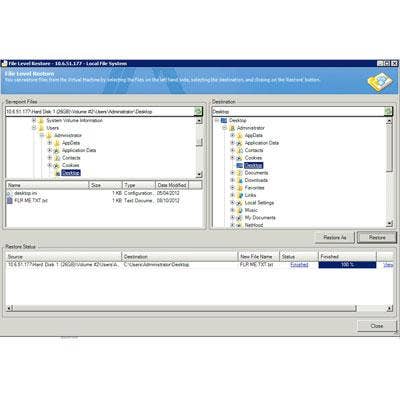
Quest Software, which is in the process of being acquired by Dell, used VMworld to unveil vRanger 6.0, the latest version of its virtual data protection solution. While vRanger was focused on VMware backup, replication and recovery capabilities, vRanger 6.0 now adds backup and recovery of physical Windows servers for comprehensive protection in virtual and physical environments. It supports VMware's vSphere 5 as well as Microsoft's Windows Server operating system. In addition, vRanger 6.0 provides application-consistent snapshot backups for a number of Microsoft applications, including Exchange, SQL Server, SharePoint and Active Directory via Microsoft’s VSS. It is slated to be released in October.
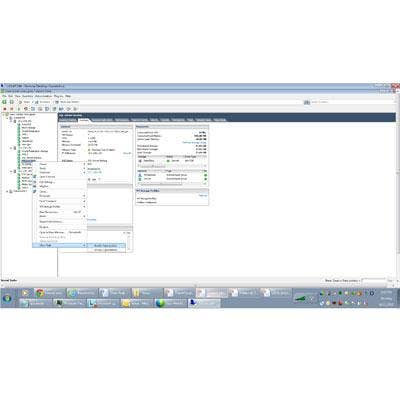
Silver Peak Systems used VMworld to show its new point-and-click solution for accelerating individual storage and other workloads directly from VMware vCenter and other virtual infrastructure management consoles. The Santa Clara, Calif.-based company said its solution targets the latency, congestion and limited network capacity that can impair application performance when enterprise workloads extend beyond a single data center.
Its solution, the Silver Peak Virtual Acceleration Open Architecture (VXOA) software, addresses these challenges from within the virtualization domain using common management platforms like VMware vCenter with little or no networking expertise required.
The Silver Peak VXOA is slated be released before year-end.
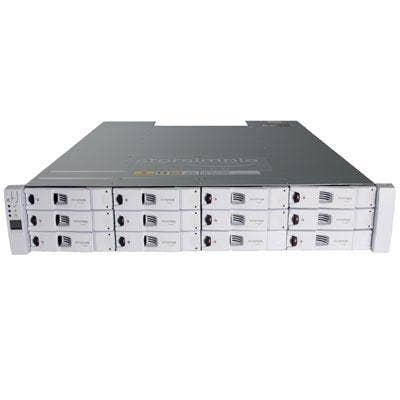
During VMworld 2012, Santa Clara, Calif.-based StorSimple showed enterprise customer results based on recently captured field data obtained using StorSimple cloud-integrated storage systems that indicated that IT teams are achieving average de-dupe ratios of 3.3x across on-premise and cloud storage volumes. StorSimple said this shows that enterprises many not have to purchase as much storage capacity, both locally and in the cloud, as previously thought. In addition, customers can also archive inactive data to the cloud, freeing additional on-premise storage capacity. StorSimple said the new data validates the company's cloud-integrated approach to enterprise storage, which enables customers to eliminate traditional SAN purchases and reduce ongoing capex and opex.
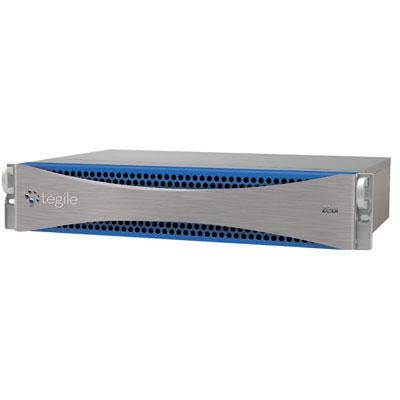
Newark, Calif.-based Tegile Systems, a developer of primary storage deduplication technology for virtualized server and desktop environments, showcased enhancements to its high-availability Metadata Accelerated Storage System (MASS) architecture and the extension of its product line with the addition of two new storage arrays, the Zebi HA2400 and Zebi HA2800. Tegile’s MASS technology separates metadata from the primary data path and optimizes functions such as deduplication, compression, RAID and snapshot pointers, which the company said reduces capacity by up to 75 percent while accelerating IO by up to seven times when compared to traditional storage systems.
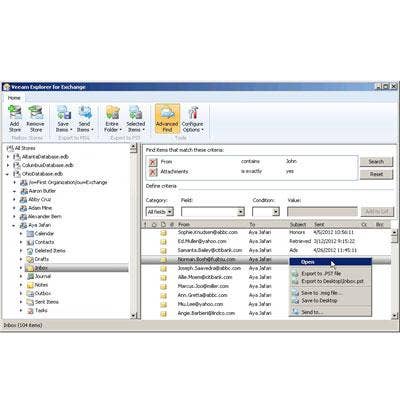
Veeam Software demonstrated two new capabilities that the Baar, Switzerland-based company in the fourth quarter plans to add free-of-charge to its upcoming Veeam Backup & Replication v6.5, including the free edition.
The first, Veeam Explorer for SAN Snapshots, was developed in conjunction with Hewlett-Packard to help IT administrators recover virtual machines, guest files or individual Microsoft Exchange items directly from HP LeftHand and HP StoreVirtual VSA snapshots to enable short recovery point objectives (RPOs) for the most common recovery scenarios.
The second is Veeam Explorer for Exchange, which lets IT admins browse Exchange databases from a compressed backup file to search for specific items across multiple mailbox databases and object types and perform e-discovery and other Exchange recovery and archiving functions.
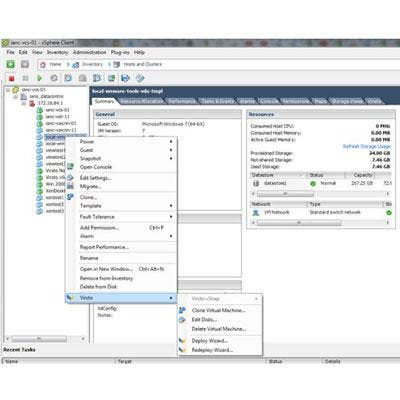
Sunnyvale, Calif.-based Virsto Software used VMworld to show its new Virsto for vSphere 1.5, which delivers virtual machine-level storage management and seamless integration with VMware vSphere. This results in simplified management of virtual machine storage, up to 10x performance improvements and a 90-percent reduction in storage capacity consumption, the company said
Features of the new version of Virsto Software includes high performance per-VM and per-VMDK snapshots and clone support, integrated deployment wizards, enhanced integration of tools for automated storage provisioning, transparent vCenter VM-storage provisioning and automated space reclamation, support for up to 10,000 Virsto vDisks per vCenter Server, and the ability to take advantage of 100 percent of the full performance of SSDs.
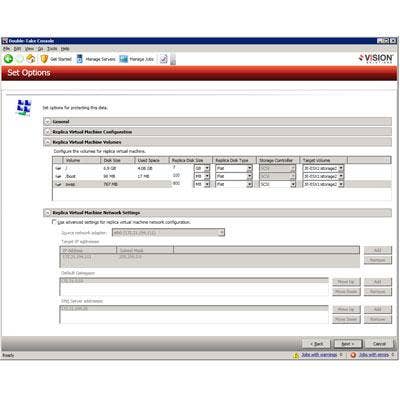
Irvine, Calif.-based Vision Solutions showed its new version 6.0 of Double-Take Move, its software for the migration of physical and virtual workloads with real-time replication that now allows replication to hosted clouds in either VMware or Microsoft Hyper-V environments.
The company also showed Double-Take Availability with UVRA for ESX version 6.0, a new release for Windows and Linux that safeguards the availability of physical, virtual and cloud-based servers on a budget.
Also new at VMworld is the 6.1 release of Double-Take's solution for vCloud Director-Aware Data protection, which works with VMware vCloud Director to replicate and fail over entire vApps, including vApp metadata and VMDKs to the same or alternate virtual data centers. This solution is expected to be available in December.
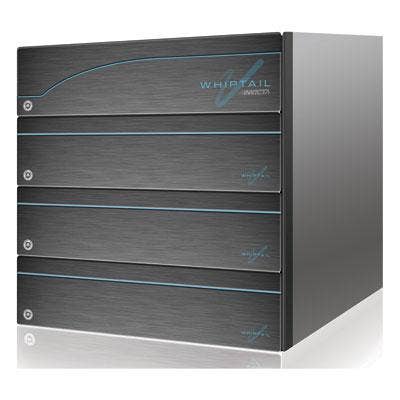
Whiptail, Whippany, N.J., said at VMworld that it will exclusively use SSDs from Boise, Idaho-based Micron in its Accela and Invicta all-NAND flash arrays. Accela is Whiptail's base flash array, and it scales from 3 TB to 12 TB. Customers can scale Accela storage up into Invicta, which scales from 6 TB to 72 TB.
At VMworld, Whiptail is demonstrating an 18-TB Invicta with Micron drives handling a VDI (virtual desktop infrastructure) bootstorm of 600 desktops, simulated MS SQL workload (SQLio) and IOmeter workloads.